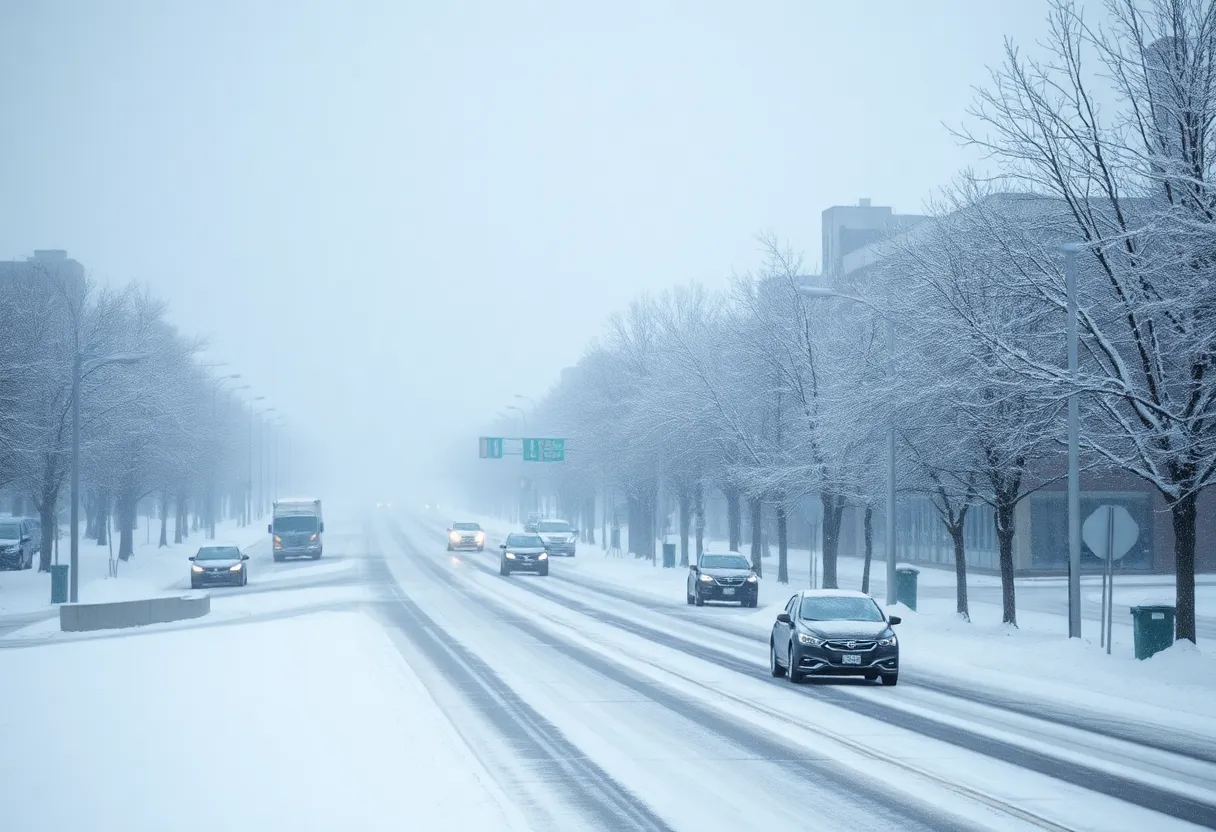Omaha, October 19, 2025
Omaha is under a La Niña Advisory that forecasts a colder and wetter winter, which may lead to record-breaking snowfall. Residents are advised to prepare for disruptions in travel and challenges in agriculture as temperatures drop and precipitation increases. City officials are ramping up measures for snow removal and community initiatives to assist vulnerable populations are underway.
La Niña Advisory Signals Harsh Winter for Omaha
Omaha, NE – As of October 19, 2025, the latest La Niña Advisory has put Omaha on high alert for a colder and wetter winter season. Meteorologists predict this weather pattern could lead to record-breaking snowfall, challenging the city’s ability to manage harsh conditions. With potential disruptions to daily travel and agriculture, local residents are already preparing by stocking up on essentials.
The advisory highlights La Niña’s influence, a climate phenomenon that often results in stronger winter storms and lower temperatures across the Midwest. For Omaha, this means preparing for temperatures that could drop well below average, along with increased precipitation in the form of snow and rain. Experts emphasize the need for early readiness to mitigate risks associated with these conditions.
Impacts on Travel and Safety
Travel in Omaha could face significant hurdles this winter due to the forecast of heavy snow accumulation. Roads may become treacherous, leading to delays or cancellations in public transportation and personal commutes. Historical data from past La Niña events shows that similar patterns have caused widespread closures on major highways like I-80, which serves as a vital artery for the region.
Residents are advised to equip vehicles with winter tires, emergency kits, and sufficient fuel. City officials are planning to ramp up snow removal operations and could extend salting schedules to keep key routes clear. These measures aim to reduce accidents, which typically spike during severe weather episodes.
Agricultural Challenges Ahead
The farming community in and around Omaha stands to feel the brunt of this forecast. A colder, wetter winter threatens livestock health and crop storage, particularly for the winter wheat that underpins Nebraska’s agricultural economy. Excess moisture could lead to frozen soils, complicating spring planting and potentially driving up food prices locally.
Farmers are responding by reinforcing barns against the cold and exploring feed alternatives to counter shortages. The advisory comes at a critical time, as harvest season wraps up, leaving little margin for unexpected freezes. Long-term, this pattern may influence yield projections for the 2026 growing season, affecting both local markets and broader supply chains.
Community Preparation Efforts
Across Omaha, stores report a surge in purchases of items like blankets, canned goods, and heating supplies. Community centers are organizing workshops on winter preparedness, focusing on vulnerable populations such as the elderly and low-income families. These initiatives include tips on conserving energy and maintaining home heating systems to avoid costly breakdowns.
The city’s emergency management team is coordinating with regional partners to ensure resources are distributed efficiently. While the exact severity remains unpredictable, the emphasis is on proactive steps to build resilience against whatever the season brings.
Understanding La Niña and Its Patterns
La Niña occurs when sea surface temperatures in the equatorial Pacific cool significantly, altering global weather dynamics. For the central U.S., this often translates to a jet stream that dips southward, funneling cold air masses into areas like Omaha. Past occurrences, such as the strong La Niña of 2020-2021, brought over 50 inches of snow to Nebraska, surpassing previous records.
Meteorologists monitor these shifts closely through satellite data and ocean buoys. The current advisory, based on observations from early October, projects a 70% chance of La Niña persisting through the winter months. This probability underscores the forecast’s reliability, though natural variability could still introduce surprises.
In the broader context, Omaha’s location on the Plains makes it particularly susceptible to extreme swings. Building on lessons from recent winters, the community is better equipped than ever to handle the demands of a La Niña-driven season. Staying informed through local weather updates will be key as conditions evolve.
This forecast serves as a call to action for all in Omaha to review personal and business plans. By prioritizing safety and sustainability, the city can navigate the challenges and emerge stronger from the winter ahead.
FAQ
What does the La Niña Advisory mean for Omaha?
The La Niña Advisory forecasts a colder, wetter winter for Omaha, potentially breaking snowfall records.
How will this weather pattern affect travel in the area?
Impacts on travel include potential disruptions due to heavy snow, with risks of road closures and delays.
What are the implications for agriculture in Omaha?
The forecast poses challenges for agriculture, including threats to livestock and crop storage from cold and wet conditions.
How are residents preparing for the winter?
Residents are stocking up on essentials as the city braces for an unpredictable season ahead.
What causes La Niña and why does it matter?
La Niña is a climate pattern that influences winter weather, leading to harsher conditions in regions like Omaha.
Key Features of the La Niña Winter Forecast for Omaha
| Feature | Description |
|---|---|
| Temperature Outlook | Colder than average, with potential for prolonged freezes. |
| Precipitation | Wetter conditions, focusing on increased snow and rain. |
| Snowfall Potential | Possibility of breaking historical records for accumulation. |
| Travel Impacts | Disruptions to roads, public transit, and daily commutes from snowstorms. |
| Agricultural Effects | Challenges for farming, including risks to crops and livestock from harsh weather. |
| Preparation Recommendations | Stock essentials, secure homes, and monitor updates for safety. |





